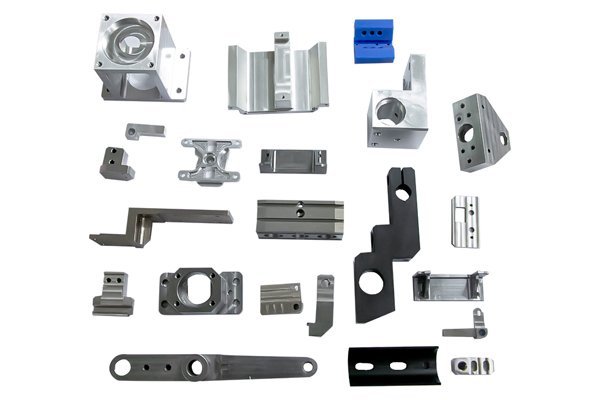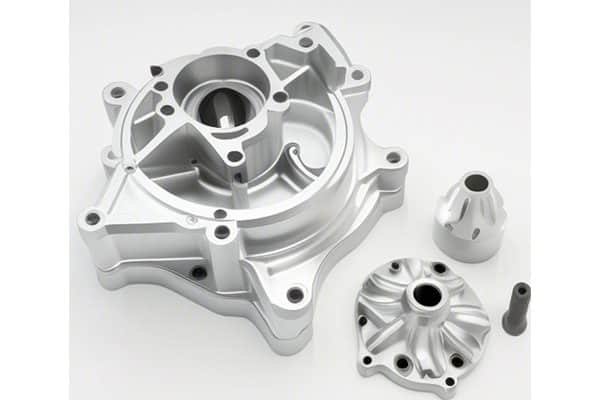Opening
Did you know that CNC (Computer Numerical Control) machining has revolutionized the production of precision parts across industries? In fact, according to the 2022 Global CNC Machine Market report, the market size is expected to reach an astounding $100 billion by
Understanding CNC Machining
CNC machining involves the use of computer software to control machine tools, such as lathes, mills, and routers, to produce parts from various materials. The technology excels at achieving high precision, repeatability, and complex design capabilities, making it a go-to solution for engineers and manufacturers looking to produce parts with intricate designs or demanding specifications.
Importance of Transmission Parts
Transmission parts play a critical role in machinery and vehicles, enabling the transfer of power from one component to another. From automotive transmissions to industrial machinery, these components require precision machining to ensure reliability and performance. Given the strict tolerances needed for effective transmission, CNC machining provides a solution that guarantees the accuracy and quality necessary for these critical parts.
Analyzing Transmission Functionality Requirements
Types of Transmission Parts
Before diving into CNC machining capabilities, it’s essential to categorize the types of parts that involve transmission functions:
Performance Criteria for Transmission Parts
When processing transmission parts, several performance criteria must be considered:
CNC Machining Process Overview
CNC machining encompasses several stages, each crucial for the production of transmission components. Understanding these steps allows you to appreciate the precision and capabilities of this technology.
The first step in CNC machining is to create a design for the part using CAD (Computer-Aided Design) software. Engineers can simulate the transmission component’s functionality and ensure that all specifications and tolerances are included. This step is vital, as it forms the foundation for the entire machining process.
Selecting the right material is a critical component of successful CNC machining. Factors influencing the choice of material include mechanical properties, corrosion resistance, weight, and cost. Common materials for transmission parts include:

Once the design and material are selected, it’s time to proceed with the actual machining process. Various CNC operations can be employed:
Post-machining, parts may undergo finishing processes to enhance surface quality and dimensional accuracy. Various techniques include:
Challenges in CNC Machining of Transmission Parts
While CNC machining provides numerous advantages, several challenges can arise during the processing of transmission components:
Maintaining tight tolerances is essential to ensure proper fit and function. Engineers must carefully review and adjust CNC programs to accommodate variations in material properties or machine performance to prevent defects.
CNC machining tools experience wear over time, leading to compromised precision and quality. Routine maintenance and tool replacement are key to maintaining performance levels.
For parts with unique shapes, programming the CNC machine to achieve the desired results can be complicated. Utilizing simulation software can help visualize machining paths and identify potential issues before actual machining.
Solutions to CNC Machining Challenges
Overcoming the challenges faced in CNC machining requires a combination of technology, material knowledge, and experienced personnel.
Investing in sophisticated CAM (Computer-Aided Manufacturing) software can facilitate better tool path planning and simulation, leading to enhanced accuracy and reduced machining errors.
Routine calibration and maintenance schedules ensure that CNC machines operate at peak performance. Regular checks on tool wear and machine settings can prevent inaccuracies in production.
Proper training for operators can significantly enhance the competency and skills necessary for managing complex machining processes, resulting in higher quality CNC components.
In conclusion, CNC machining plays a pivotal role in producing high-quality transmission parts across various applications. The ability to create intricate designs with precision and efficiency underscores its importance in modern manufacturing. By understanding the key technologies involved, such as design principles, material selection, machining processes, and challenges faced, manufacturers can harness the full potential of CNC machining to create reliable and effective components with transmission functions.
As industries continue to evolve, embracing advanced manufacturing solutions will remain vital for meeting the ever-increasing demands for accuracy, efficiency, and performance. Thus, thinking about incorporating CNC machining into your production processes not only makes sense but serves as a crucial step toward maintaining a competitive edge in your field. Whether you’re an engineer, manufacturer, or simply interested in machining technologies, the importance of these insights cannot be overstated.






